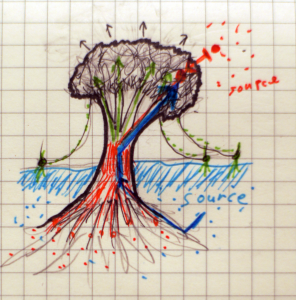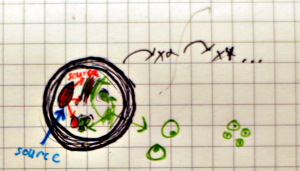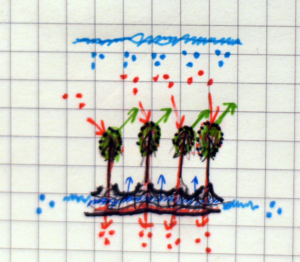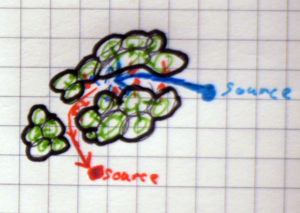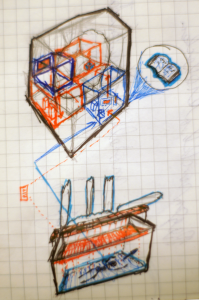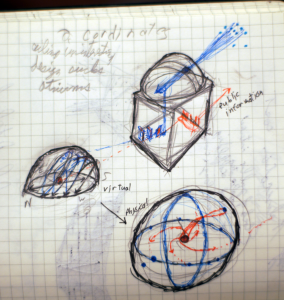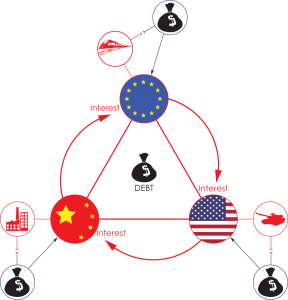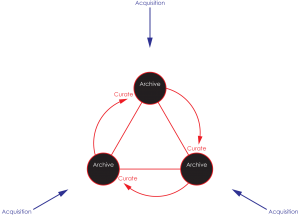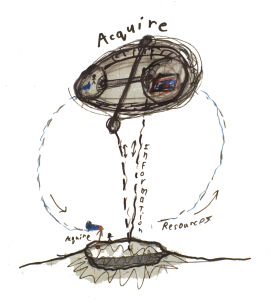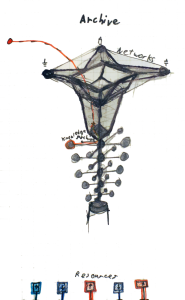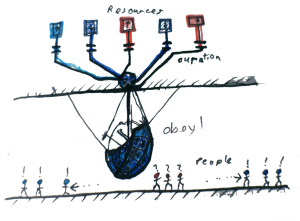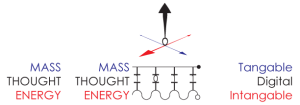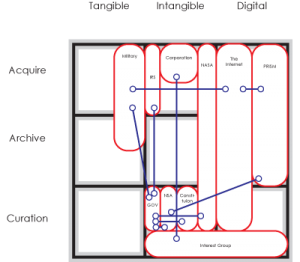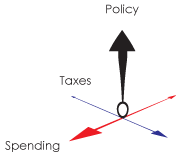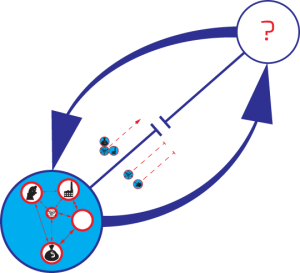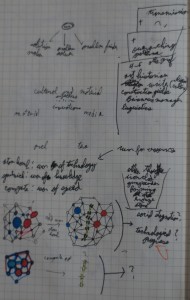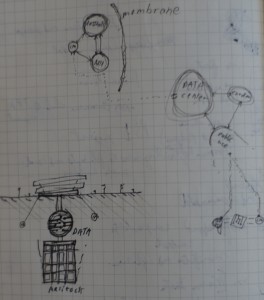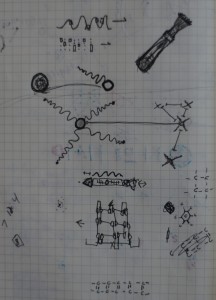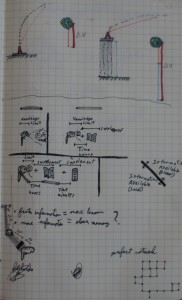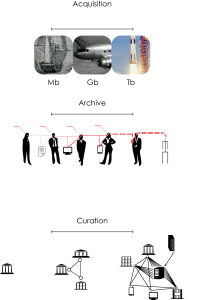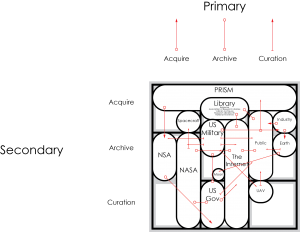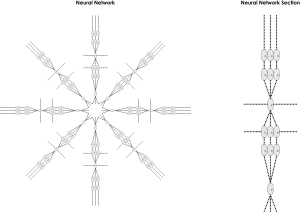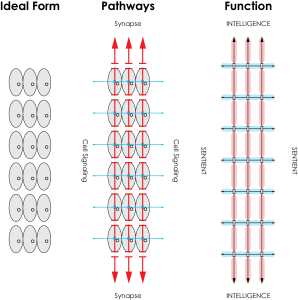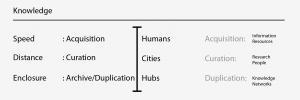Anthropic Macrostructures
“The pattern of human population growth in the twentieth century was more bacterial than primate,” -Geologic Now
“Wilson calculates that human biomass is already 100 times larger than that of any other large animal species that has ever walked the Earth.” -Geologic Now
‘30% of jungle biomass is ants’ -Emergence, Johnson
“Ignorance is useful” -Emergence, Johnson
It becomes difficult to design for humanity at any scale when we realize that we neither are like ant colonies- in which members of the colony have appropriate reduced intellect compared to the whole system- nor like Bacteria. Designing the macro for humanity is more akin to designing an environment for many anthills, than designing an anthill for ants. For most of human history, our population caps were limited by our environment. But now we have come to rule that environment and restrain it, freeing ourselves from the typical forms of natural selection and evolutionary pressures. Our reach simply exceeds our grasp when it comes to our impact and power on the Earth. While we are exploding as a species and fears of overpopulation are ringing nigh, it’s still expected that we may go as far as 9 billion, according to the UN. That goes up several more billion if the third world progresses in health saftey and food security. The Carpenter ants in Johnson’s work had embedded population and environmental self regulators that maintained populations, but we humans are, in a sense, too intelligent to be bound by such caps. In a sense, humans are also completely decentralized for that reason. But we are also centralized in that we form hierarchy. The question that stems from this is how to introduce non-centralized regulations that become embedded in our living spaces and enclosures in order to know, beneath or intellect, how to live, regulate, manage, consume and reproduce upon the anthropic macrostructure that the Earth has become. That macrostructure, as a living system, already displays features of our microsystems smaller than us. Consider a blackout’s effect on a region? How different is a blackout to a city from a pasteurization process for a collection of organisms? As such, perhaps there are micro loci and responses that can be applied and embedded on the macro scale of the Earth to design it to sustain itself without humans going extinct or falling back down into a new dark age.
http://www.un.org/apps/news/story.asp?NewsID=45165#.UintelNYYcs
Knowledge as a resource and the next enclosure
“Starvation. Experiment. Illness. All my speculation, all the theories I invoked to explain
this place—top-down constraint, all of it. Underneath, I always knew the ability to
change—to assimilate—had to remain the universal constant. No world evolves if its
cells don’t evolve; no cell evolves if it can’t change. It’s the nature of life everywhere.
Everywhere but here.”-Watts, The Things.
Every phase of development of the known universe displays a similar pattern of development: Conditions allow for some form of replication, the replicators expand and diversify to use the local resources, one replicator “discovers” it can get free resources which either comes by destroying the others or the fabrication of a process that often destroys the others. This cycle usually concludes with the adaptation of some form of enclosure to protect from this sudden change. Mass extinction is the end for everyone else who cannot adapt. This process was seen when the first replicators began outputting oxygen, leading to the formation of cellular membranes. It was also seen when the first membrane enclosed replicators began consuming other replicators for food, leading to multicellular life and sexual reproduction for the protection of “one’s livelihood”. It happened once again when the first multicellular organisms began to eat each other, leading to enclosures such as bark, scales, skin, etc.The result of this action can be seen at a much larger resonance in recent history. 70,000 years ago Neanderthals had an established civilization. Archeology has uncovered rich remains ranging from medicine, to culture, to burial of the dead, possibly even primitive sculptures. These creatures had no real enclosures other than the occasional cave. Then humanity arrived some 50,000-30,000 years. A sudden change happens in the archeological record. Humans come in which new advanced technology of spear making and tool fabrication. And an uncanny ability to adapt. Suddenly all those records of Neanderthal culture vanish within a few thousand years, replaced with evidence of cannibalism, leaving the dead where they fall, and the skeletons of children mixed with refuse piles in abandoned caves. The archeological evidence gives hints to scenes of an apocalypse of sorts. With the only known remains being a few hints of crossbreeding between Humans and Neanderthals. Soon after, with no more free resources, humans turned on each other. Villages and caves became assets to claim and conquer. One of the next main remains on the archeological record should be fairly obvious. Walls.
How can we change this pattern for the future? How can we redesign the enclosure of the Anthropocene and its otherworldly continuations to not result in another Neanderthal catastrophe? Evidence seems that the next cycle seems to be dealing with the resource of knowledge, presumably the result of the advent of sentient life on Earth. Humans crave it, in all its forms. We are already developing primitive enclosures to protect it. Wealth is a sort of enclosure. In many places it’s impossible to gain knowledge without it. The internet is helping redefine that. But even now a new enclosure is being attempted from the NSA reveal to the hacking defense and offense tactics between the East and West. If knowledge is to be the next resource, both physically and virtually, what kind of enclosure can enable a semi-permeable form? And it follows, how can one design it so that those seeking knowledge are sorted between those seeking to use it to destroy, and those seeking to use it to create. In a sense, how does one design a herbivore of knowledge?
Watt’s Things seem to be carnivorous. And the result is our elimination it would appear. Perhaps if we are to ascend to a similar role as these “Things”, we can do it in our own image?
Diversification of the anthropocene
“Future geologists are more likely to grasp the scale of 21st-century industrial agriculture from the pollen record—from the monochrome patches of corn, wheat, and soy pollen that will have replaced the varied record left behind by rainforests or prairies.” -Making the Geologic Now, Ellsworth & Kruse
If the Antrhopocene is now, and like other epochs, is beginning in light of an extinction event, then what sort of diversification of the next phase of life can one expect? It is fairly apparent by now that each Epoch of history as been going faster and faster. The Proterozoic was one billion, the Paleozoic was 291 million, the Mesozoic 186 million, the Cenozoic just 60 million. Now one could argue this most recent epoch was just some 6 million. It is only logical that the ability to design with a free will and intellect would be birthed now of all times. Evolution likely is not fast enough to adapt to the next shift. It needs an agent to speed it up. That agent might just be humans. Design, after all, is a radically new thing in all history of the universe. For the first time, life can plot its own course outside of the normal limits of natural selection. If this be the case, how can we design that new world? The world of Nausicaa seems to have dealt with this question quite radically. I would even imagine that the fact that it’s only been a few thousand years since the Apocalypse, yet life has evolved as if hundreds of millions of years have gone by, gives strong evidence that no life in this world is a product of evolution. It is, instead, the product of biologists designing for a world they saw coming. They saw the holocene extinction and thought “how can we birth a new world that might sustain itself?”. Why not design a forest to filter the pollutions and destruction of man? Perhaps it is true. The Earth doesn’t think humanity can progress if they have to rely on those monsters. Perhaps, even, it was a test to force humanity to claim its role in the designer of the world, not the consumer.
http://www.chronozoom.com/#/t00000000-0000-0000-0000-000000000000@x=0.10826817754518972&y=-0.11128759681459077&w=1.0885086610125088&h=0.8662817180126591
http://upload.wikimedia.org/wikipedia/commons/7/77/Geologic_Clock_with_events_and_periods.svg
